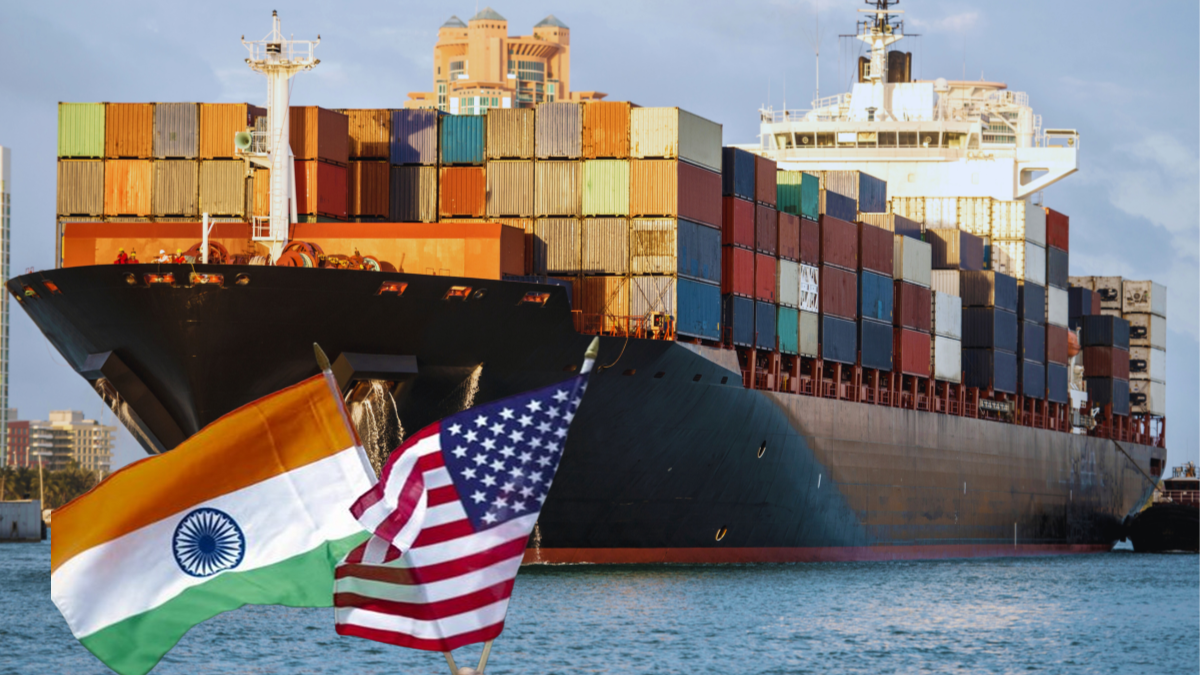A team of Indian officials has already landed in Washington to continue negotiations on the first trance of the Bilateral Trade Agreement (BTA) and the talks are expected to continue till Thursday.
While the negotiations will be on the BTA, any progress that can be made before the August 1 deadline for implementation of reciprocal tariffs will be packaged as an interim agreement, officials said. “We are not differentiating between an interim or the first phase of the bilateral trade agreement. Talks will continue on the first tranche BTA after the initial agreement,” they said..
The Indian team that has reached the US will start engaging with their US counterparts from Monday. India’s chief negotiator for the BTA, Special Secretary Rajesh Agrawal will join the team in Washington on Wednesday.
The latest round of meetings come in the midst of President Donald Trump issuing letters to individual countries and economic blocs notifying them of the tariffs the US will impose on their shipments to the US after August 1. While unilaterally imposing tariffs, the US has left the door open to negotiations for all the recipients.
The US has shot-off letters to 24 countries and the European Union (EU) imposing tariffs that are as high as 50% on Brazil. With the UK and Vietnam the US has said that a deal has been concluded. However, with Vietnam the full clarity is yet to emerge as Trump has claimed that duties of 20% will be imposed on Vietnamese imports but officials in Hanoi point out that they had agreed to just 11% duties.
The countries that are at the receiving end of Trump tariffs include some of its biggest trading partners and close allies like the European Union, Mexico, Japan, Korea and Canada. There is a possibility that more letters may be issued as the August 1 deadline comes to an end.
The latest visit comes within two weeks of a similar visit to the US by the Indian negotiating team. The team then was to stay in Washington for two days but the talks went on for seven days – from June 26 to July 2. In between physical meetings India and US are also in touch virtually.
In the last round of talks the Indian side had spelled their offers and limits of liberalisation to the US side and now await their decision.
It is the US demands on liberalisation of agriculture imports that is turning out to be a biggest issue in the negotiations. The US is aggressively pursuing the opening up of India’s agriculture market for its farmers through duty cuts and permissions to sell genetically modified products in India. It also wants India to lower duties on automobiles and buy more energy products. While protecting its farmers’ interests especially in the dairy sector and cereals like wheat and rice, India has sought greater market access for its labour intensive and emerging sectors of manufacturing like electronics.
Apart from goods trade, the other objective of the US in these negotiations is to get a more liberal regulatory climate for its technology companies in India.
The strategic partnership between the two countries is also guiding the approach in the talks. The trade deal may be sweetened with India purchasing more defence equipment from the US.
The deal between India and the US goes beyond trade and both sides are keen to preserve the relationship. The US remains the biggest market for India’s exports and the only major economy with which it enjoys a trade surplus.
In FY2025, trade between India and the U.S. reached $186 billion as per commerce ministry data. India exported $ 86.5 billion in goods to the U.S. while importing $45.3 billion, creating a goods trade surplus of $41 billion. In services, India exported an estimated $28.7 billion and imported $25.5 billion, adding a $3.2 billion surplus. Altogether, India ran a total trade surplus of about $ 44.4 billion with the US.

